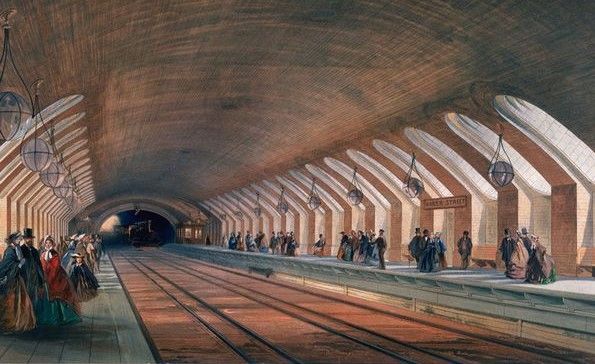When the world's first urban, underground railway opened in London in 1863, Lord Palmerston was Prime Minister, Queen Victoria reined, and in the United States the Civil War was raging. The combustion engine was just beginning to emerge, and "high-speed mobile connectivity" typically meant a steam train.
The internet was a fever dream and infrastructure to support it -- let alone other rudimental requirements like proper ventilation -- was far from mind. (As late as 2002 Underground temperatures were found to be so high that anyone taking their pet gerbil to work would be breaking animal welfare laws.)
Getting a high-speed network into London's Underground, as a result, has long been an unnervingly complex challenge. The aging infrastructure (the Circle Line opened in 1884; the District Line in 1868; the Central Line in 1900) means tunnels are narrow, often very deep, there is no space to put normal masts and any electronics need to be resilient to both damp and nebulae of corrosive brake dust.
See also: Highways England’s ambitious Digital, Data and Technology Strategy wins CIO plaudits.

London Underground internet is coming...
Yet it's finally happening. Three years after launching the first phase of a complex tender process, Transport for London (TfL) this week said it has picked BAI Communications to build a high-speed network in the London Underground, and beyond. (Earlier trials of a 4G system on the Waterloo and City line had been conducted by O2 and Vodafone but only between Waterloo and Bank.)
BAI Communications beat Cellnex UK Ltd, Wireless Infrastructure Group, and a consortium of Axia and SC to the 20-year concession, which will see it deliver infrastructure to underpin 4G mobile communications, a high density fibre network, and support the national Emergency Services Network radio system. The company will need to install more than 2,000 kilometres of cabling, and invest over £1 billion.
Billy D’Arcy, CEO of BAI Communications UK, told The Stack: “Working within confined, complex and hard to manage spaces, like the London Underground, will always present challenges. Due to the sensitivity and complexity of the technologies we use, extra care must be taken during installation to resist the heat, damp and dust found in hostile underground environments, as well as making sure trains do not strike newly installed equipment. The solution to all of this is highly detailed planning, whether that is using 3D visualisation to show how installation will work and highlighting the best locations for equipment, or carefully installing the right the equipment enclosures to dust-proof network components and connections for years to come.
“Above all, we want to cause minimal disruption to passengers. Transport systems in major cities often only stop for a few hours each night, if at all. Most of the work in London will be carried out during maintenance hours, in short bursts of two to three hours, so that travel can continue seamlessly during the day. To fit the work into such a short timeslot, our engineers will swap their traditional, bulky tools for lighter, modern versions. We will also be using innovative methods, such as remote equipment monitoring, to enable us to improve efficiency and deliver the project on time and on budget.”
As the infrastructure is built out, London's newly online Tube tunnels will also be used to provide full fibre connectivity across the city, which can then in turn be connected to buildings and street assets like street lighting and bus stops to "improve urban life" TfL said June 22.

TfL's CTO Shashi Verma, who said he was "absolutely thrilled", noted in a LinkedIn post: "This has been a long journey to find a solution that works in the very challenging environment of 19th century Tube tunnels but we will now be bringing the best of the 21st century into our services. The eastern half of the Jubilee Line has had mobile communications for the last year and the experience has been great."
He added: "Ironically, service started on the same day that most people started working from home due to the pandemic. The next time you are on the Jubilee Line do look out for your phone getting a 4G signal..."
BAI, which has experience building underground communications networks in New York, Toronto, and Hong Kong, will operate as a neutral host for fixed and mobile operators. Work will begin "immediately", BAI Communications said June 22, with all stations and tunnels due to have mobile coverage in four years.
Billy D'Arcy, CEO of BAI Communications UK, added: "By building the most advanced network of its kind in the world here, we are helping London leapfrog other major cities in terms of connectivity and ensure that the capital remains the most attractive place for investment. Across the length of this concession, we fully anticipate investing in excess of £1 billion across the Connected London programme."
The project is being granted as a concession to BAI Communications, which as an investor as well as project operator will derive its own new income stream without any capital costs for TfL.









